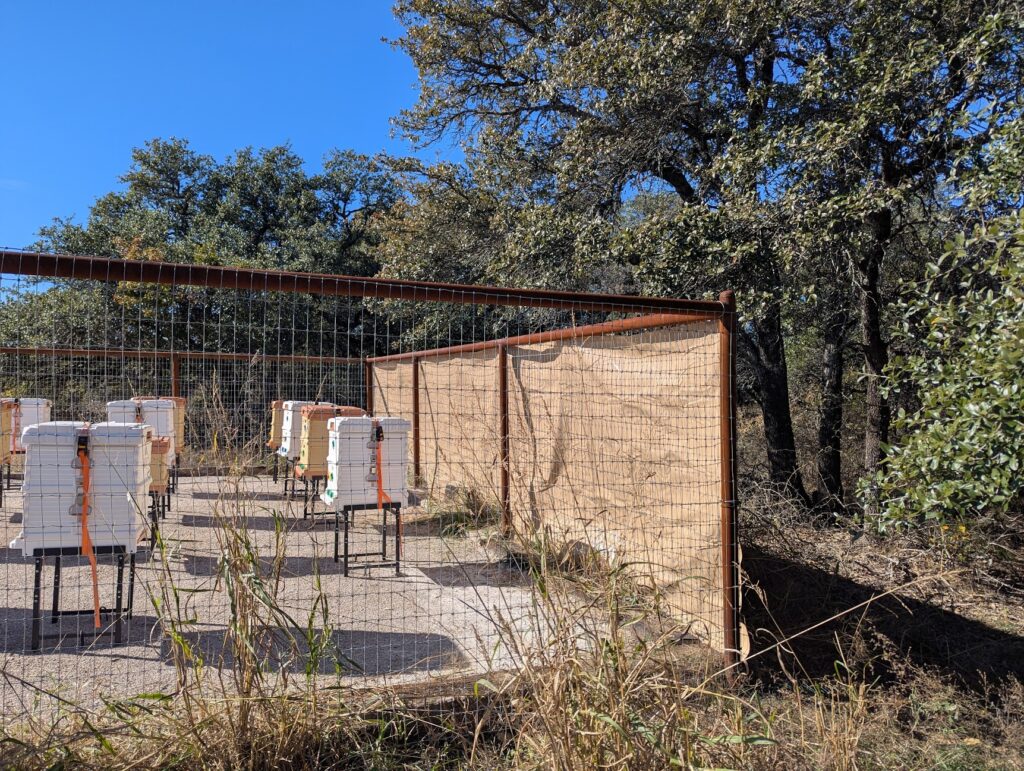
With temperatures currently in the 20s, windchill in the single digits, and snow forecasted for later this week, winterizing bee hives is a top priority. Fortunately, we didn’t wait until the last minute to take steps to protect our honey bees.
To begin with, we chose Apimaye hive boxes for our apiary (see above photo). These polymer beehives provide more insulation than traditional wooden Langstroth hives and offer greater protection from moisture.
In addition, we located the apiary against a northern tree line in order to have the trees and brush there create a wind break. We supplemented this natural barrier by adding a tarp to the north side of the apiary (see photo above) to provide greater shielding from winter storms.
And decrease the amount of cold that can flow into the hive, we reduce the size of each hive entrance. Fortunately, the Apimaye hives come with sliders that make this easy to do. And with the entrances facing southeast, this also reduces the effects of northern winter winds.
Now we don’t open the hives during winter cold. We just provide weekly supplemental feeding through top feeders. If the weather gets into the upper 40s or 50s, you’ll see a few of the bees come out of each hives entrance. And if you put your ear to the side of the hive, you can hear them buzzing.
Of course, there are no guarantees that every hive will survive a harsh winter. However, we do our best to ensure ours will be around in the spring to produce more Texas wildflower honey.
Are all of those winterizing steps necessary? We’re not sure but taking the precautions anyway because we don’t want to lose our bees. However, there is a wild beehive on the ranch located in a large oak tree. It has a large entrance facing north. Nothing is done by us to winterize it. Yet it survives and thrives.
